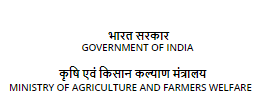The Production of Cane Dietary Fibre Food Products
Background:
Sugarcane is one of the most important sources of fiber worldwide. Considering the projected rise in diabetic population in India to 80 million by 2030 and wide popularity of bakery products among the young Indians and in the metros as a convenient food, transformation to new health and wellness foods is essential to add value to the food products. In an attempt to diversify the use of sugarcane bagasse flour for fiber enrichment, technology was developed at ICAR-SBI to use bagasse as a source of dietary to produce array of bakery products enriched with cane fiber.:
Technology Details:
Sugarcane bagasse, an abundant agricultural Iignocellulosic by-product, is a fibrous residue of cane stalks left over after extraction of the juice from the sugarcane. Bagasse, obtained as a by-product of sugarcane processing, is composed of fiber, pith, insoluble solids and water. Its morphological structure is not strong in comparison with other fibers such as wood. An important advantage is that it is directly obtained and concentrated in the sugar factory as a process of by-product, thus simplifying its handling and transport operations. Thousands of tonnes of waste byproducts from the sugar industry are generated annually in the form of bagasse. Bagasse is an excellent source of dietary fiber, both soluble and insoluble fibers. Bagasse flour can be introduced along with wheat flour, and can be used to prepare variety of food products. Bread, Rusk and Cookies are considered as a vehicle for combating malnutrition especially in the developing world. It is to be fortified with fiber of acceptable cooking quality. The present study was under taken to develop bakery products from the composite flour containing wheat flour, bagasse flour and other important ingredients along with the analysis of its physico-chemical characteristics. Bread, Rusk and cookies were produced in different combinations of cane fiber content. The invention mainly focused on developing the process and methods to use cane fiber as source of dietrary fiber in various food products. Finely ground sugarcane bagasse fiber was pretreated with alkaline solution (01-05%) and cell wall degrading cocktail enzymes (Cellulases, hemicellulases, pectinases and ligninases, 1-5U) to soften the fiber thickness, texture and solubility. Further, pretreated cane fiber was thoroughly washed in the hot water and used in different concentration (1-20%) as a source of dietary fiber to produce various food products. Developed products were further characterized for their physicochemical properties.


